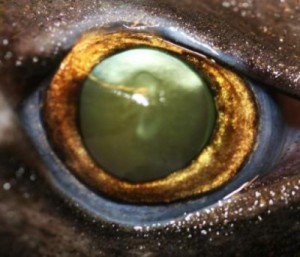For a long time It seemed as if every country in the world, except Canada, had some some sort of graphene event. According to a July 16, 2015 news item on Nanotechnology Now, Canada has now stepped up, albeit, in a peculiarly Canadian fashion. First the news,
Mid October [Oct. 14 -16, 2015], the Graphene & 2D Materials Canada 2015 International Conference & Exhibition (www.graphenecanada2015.com) will take place in Montreal (Canada).
I found a July 16, 2015 news release (PDF) announcing the Canadian event on the lead organizer’s (Phantoms Foundation located in Spain) website,
On the second day of the event (15th October, 2015), an Industrial Forum will bring together top industry leaders to discuss recent advances in technology developments and business opportunities in graphene commercialization.
At this stage, the event unveils 38 keynote & invited speakers. On the Industrial Forum 19 of them will present the latest in terms of Energy, Applications, Production and Worldwide Initiatives & Priorities.
Plenary:
Gary Economo (Grafoid Inc., Canada)
Khasha Ghaffarzadeh (IDTechEx, UK)
Shu-Jen Han (IBM T.J. Watson Research Center, USA)
Bor Z. Jang (Angstron Materials, USA)
Seongjun Park (Samsung Advanced Institute of Technology (SAIT), Korea)
Chun-Yun Sung (Lockheed Martin, USA)
Parallel Sessions:
Gordon Chiu (Grafoid Inc., Canada)
Jesus de la Fuente (Graphenea, Spain)
Mark Gallerneault (ALCERECO Inc., Canada)
Ray Gibbs (Haydale Graphene Industries, UK)
Masataka Hasegawa (AIST, Japan)
Byung Hee Hong (SNU & Graphene Square, Korea)
Tony Ling (Jestico + Whiles, UK)
Carla Miner (SDTC, Canada)
Gregory Pognon (THALES Research & Technology, France)
Elena Polyakova (Graphene Laboratories Inc, USA)
Federico Rosei (INRS–EMT, Université du Québec, Canada)
Aiping Yu (University of Waterloo, Canada)
Hua Zhang (MSE-NTU, Singapore)
Apart from the industrial forum, several industry-related activities will be organized:
– Extensive thematic workshops in parallel (Standardization, Materials & Devices Characterization, Bio & Health and Electronic Devices)
– An exhibition carried out with the latest graphene trends (Grafoid, RAYMOR NanoIntegris, Nanomagnetics Instruments, ICEX and Xerox Research Centre of Canada (XRCC) already confirmed)
– B2B meetings to foster technical cooperation in the field of Graphene
It’s still possible to contribute to the event with an oral presentation. The call for abstracts is open until July, 20 [2015]. [emphasis mine]
Graphene Canada 2015 is already supported by Canada’s leading graphene applications developer, Grafoid Inc., Tourisme Montréal and Université de Montréal.
This is what makes the event peculiarly Canadian: multiculturalism, anyone? From the news release,
Organisers: Phantoms Foundation www.phantomsnet.net & Grafoid Foundation (lead organizers)
CEMES/CNRS (France) | Grafoid (Canada) | Catalan Institute of Nanoscience and Nanotechnology – ICN2 (Spain) | IIT (Italy) | McGill University, Canada | Texas Instruments (USA) | Université Catholique de Louvain (Belgium) | Université de Montreal, Canada
It’s billed as a ‘Canada Graphene 2015’ and, as I recall, these types of events don’t usually have so many other countries listed as organizers. For example, UK Graphene 2015 would have mostly or all of its organizers (especially the leads) located in the UK.
Getting to the Canadian content, I wrote about Grafoid at length tracking some of its relationships to companies it owns, a business deal with Hydro Québec, and a partnership with the University of Waterloo, and a nonrepayable grant from the Canadian federal government (Sustainable Development Technology Canada [SDTC]) in a Feb. 23, 2015 posting. Do take a look at the post if you’re curious about the heavily interlinked nature of the Canadian graphene scene and take another look at the list of speakers and their agencies (Mark Gallerneault of ALCERECO [partially owned by Grafoid], Carla Miner of SDTC [Grafoid received monies from the Canadian federal department], Federico Rosei of INRS–EMT, Université du Québec [another Quebec link], Aiping Yu, University of Waterloo [an academic partner to Grafoid]). The Canadian graphene community is a small one so it’s not surprising there are links between the Canadian speakers but it does seem odd that Lomiko Metals is not represented here. Still, new speakers have been announced since the news release (e.g., Frank Koppens of ICFO, Spain, and Vladimir Falko of Lancaster University, UK) so time remains.
Meanwhile, Lomiko Metals has announced in a July 17, 2015 news item on Azonano that Graphene 3D labs has changed the percentage of its outstanding shares affecting the percentage that Lomiko owns, amid some production and distribution announcements. The bit about launching commercial sales of its graphene filament seems more interesting to me,
On March 16, 2015 Graphene 3D Lab (TSXV:GGG) (OTCQB:GPHBF) announced that it launched commercial sales of its Conductive Graphene Filament for 3D printing. The filament incorporates highly conductive proprietary nano-carbon materials to enhance the properties of PLA, a widely used thermoplastic material for 3D printing; therefore, the filament is compatible with most commercially available 3D printers. The conductive filament can be used to print conductive traces (similar to as used in circuit boards) within 3D printed parts for electronics.
So, that’s all I’ve got for Canada’s graphene scene.
